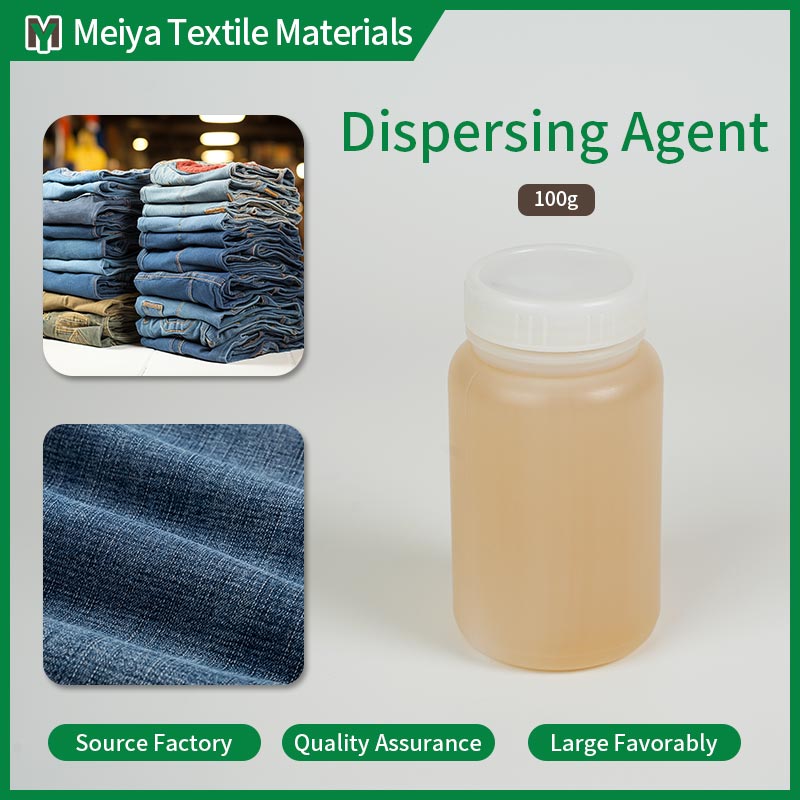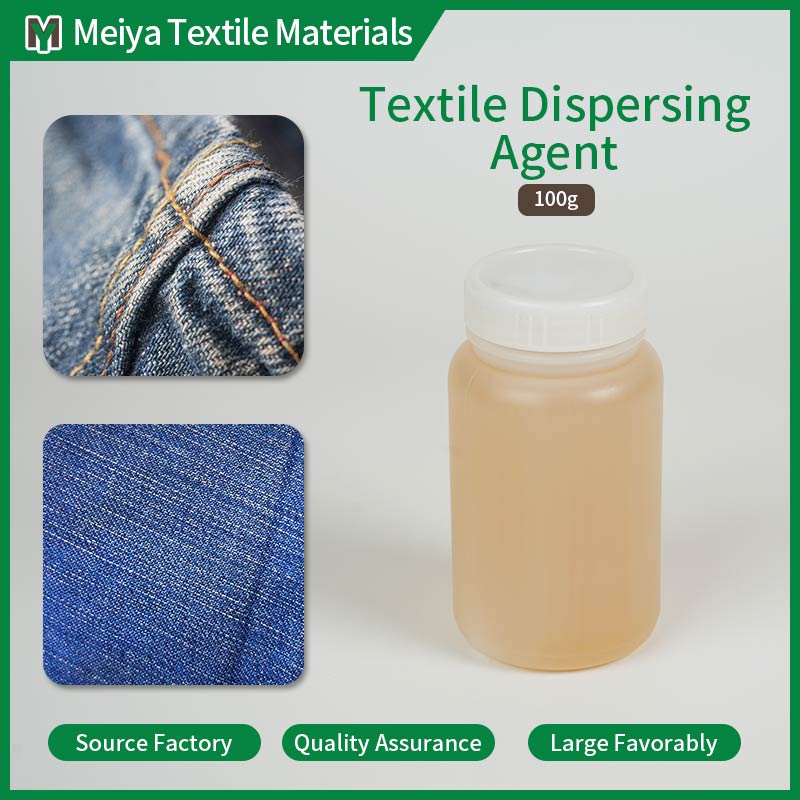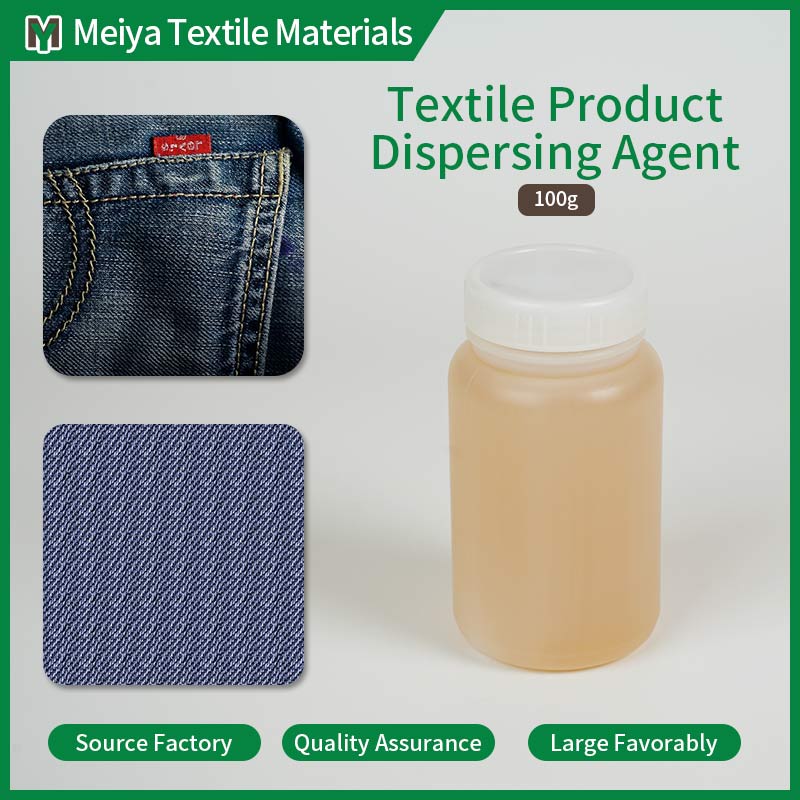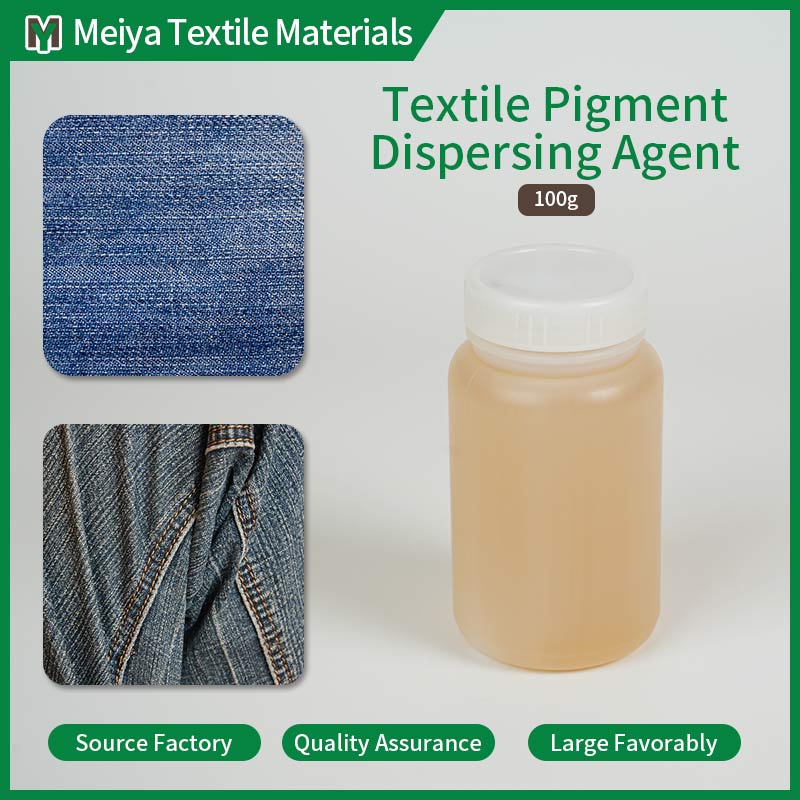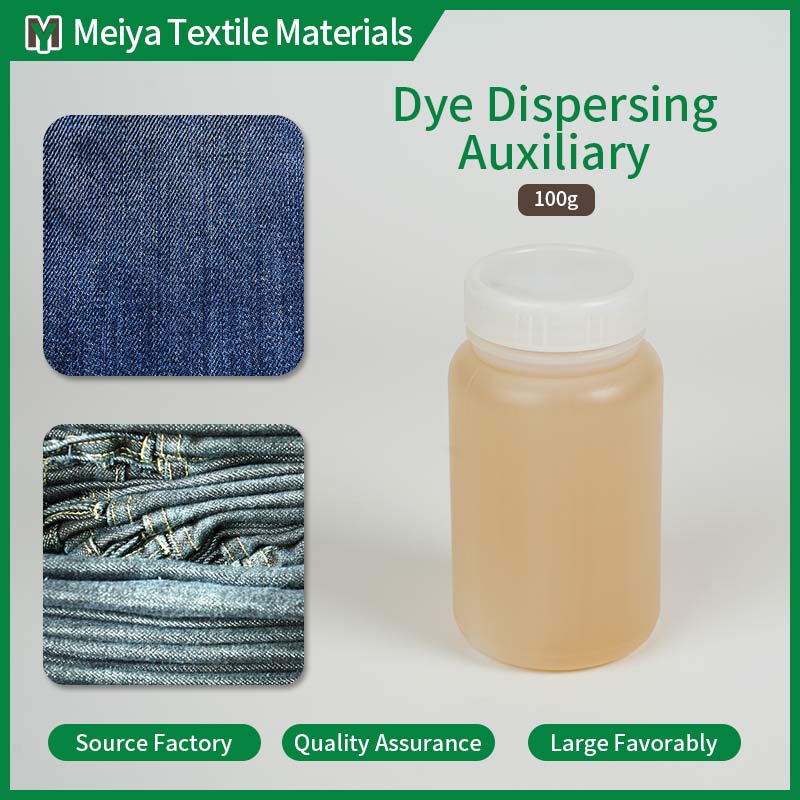Dispersing Agents for Dyes
Please click the button below to contact us.
Introduction:In the textile dyeing process, Dispersing Agents for Dyes can effectively reduce the tendency of dye particles to aggregate, thereby ensuring that the dye is evenly distributed in the dye bath. It plays a vital role in the dyeing process, helping to improve dyeing efficiency and dyeing quality and reduce possible problems in the dyeing process.
Product Description
Dispersing Agents for Dyes are auxiliary chemicals specifically used in the dye dispersion process. In the textile dyeing process, it can effectively reduce the tendency of dye particles to aggregate, thereby ensuring that the dye is evenly distributed in the dye bath. It plays a vital role in the dyeing process, helping to improve dyeing efficiency and dyeing quality and reduce possible problems in the dyeing process.
Dispersing Agents for Dyes Features
Highly efficient dispersibility: Dispersing Agents for Dyes have excellent dispersing ability, which can make the dye particles evenly distributed in the solution. Its dispersing efficiency is 30% higher than that of ordinary dispersants, effectively preventing dye aggregation, ensuring dyeing uniformity, and reducing quality problems such as color difference and uneven dyeing.
Good stability: In a wide pH range (pH 4-10), this dispersant can maintain stable performance, and its stability index reaches more than 0.95, ensuring that it can play an effective role under different dyeing conditions, maintain the stability of the dye dispersion system, and extend the service life of the dye.
Excellent solubility: It has excellent solubility in water, and the dissolution rate is 25% faster than similar products. It can be completely dissolved in a short time to form a uniform solution, which is easy to mix with dyes, improve dyeing efficiency, and reduce preparation time before dyeing.
Strong adsorption: It has strong adsorption capacity for dyes and fibers, and the adsorption rate can reach more than 85%. It can firmly fix the dye on the fiber surface, enhance the dyeing fastness, make the color more vivid and lasting, and reduce the loss of dyes during washing and use.
Low foaming: The amount of foam generated during the dyeing process is very small, and the foam height is less than 10mm, which helps the dyeing process go smoothly, avoids problems such as uneven dyeing or dye overflow caused by excessive foam, and improves the convenience and safety of dyeing operations.
Environmental protection: It meets strict environmental protection standards, and the biodegradability of its main ingredients reaches more than 90%, which is harmless to the environment and does not contain any harmful substances such as heavy metals, formaldehyde, etc., ensuring that it will not cause harm to the environment and human health during production and use.
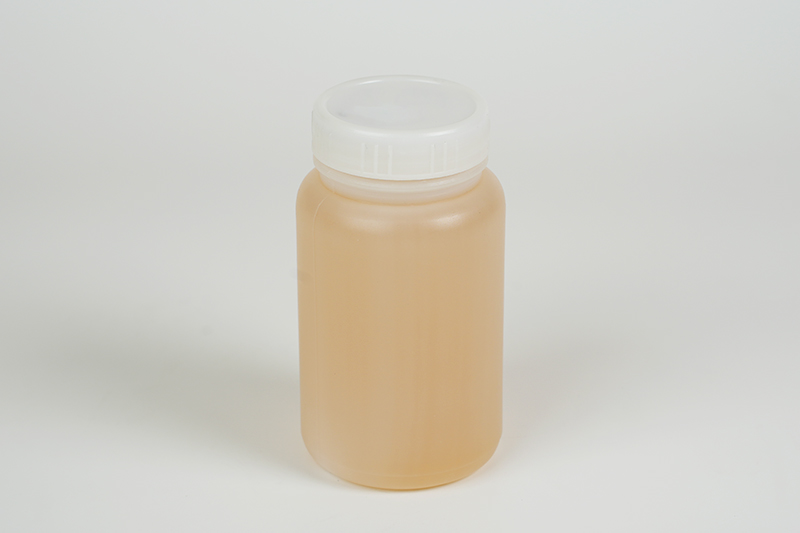
Dispersing Agents for Dyes Application
Cotton fabric dyeing: In the dyeing process of cotton fabric, Dispersing Agents for Dyes can be used in conjunction with reactive dyes, direct dyes, etc. to improve the dyeing rate and dyeing uniformity of the dye, making the color of the cotton fabric more vivid and full, while enhancing the dyeing fastness. It is suitable for dyeing various cotton fabrics, such as cotton cloth, cotton yarn, etc.
Polyester fabric dyeing: For polyester fabrics, this dispersant has good compatibility with disperse dyes, which can effectively solve the problem that the surface of polyester fibers is smooth and the dyes are not easy to adsorb, improve the dispersibility and permeability of dyes, and make the dyed polyester fabrics uniform and bright in color, and have good rubbing fastness and washing fastness. It is widely used in the dyeing of polyester fibers, such as polyester filament, polyester staple fiber, etc.
Blended fabric dyeing: In the dyeing of multi-component fibers such as cotton-polyester blended fabrics, it can coordinate the adsorption properties of different fibers to dyes, make the dyes evenly distributed on various fibers, avoid color difference and uneven dyeing, and ensure the overall dyeing effect of blended fabrics. It is suitable for the dyeing of various blended fabrics such as cotton-polyester, polyester-cotton, and polyester-nylon.
Printing process: In the textile printing process, Dispersing Agents for Dyes can be used as an additive to the printing paste to improve the rheological properties and stability of the printing paste, making the printed pattern clearer and more delicate, with high color reproduction, while enhancing the fastness of the printing to prevent the printing from fading or blurring during washing. It is suitable for a variety of printing processes such as reactive printing and disperse printing.
Leather dyeing: In the field of leather processing, this dispersant can be combined with leather dyes to improve the dispersion effect of dyes on the leather surface, making the leather dyeing more uniform and natural in color, improving the dyeing quality and appearance quality of leather, and is suitable for the dyeing of various leather products, such as shoe upper leather, clothing leather, etc.
Paper dyeing: In the paper production process, Dispersing Agents for Dyes can be used for paper dyeing, which can make the dye evenly distributed in the paper fiber, improve the color uniformity and tone stability of the paper, and enhance the beauty and practicality of the paper. It is suitable for the production of various colored papers, wrapping papers, decorative papers, etc.
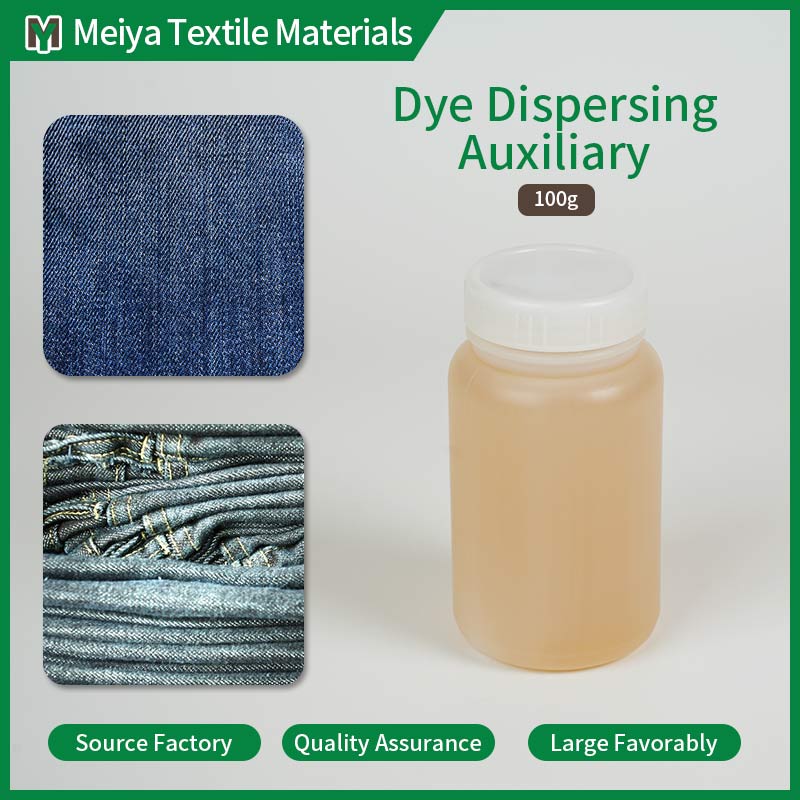
Dispersing Agents for Dyes Maintenance
Storage environment control: Dispersing Agents for Dyes should be stored in a cool, dry, well-ventilated environment, avoiding direct sunlight and high temperature. The ideal storage temperature range is 5℃-30℃, and the relative humidity should be controlled at 40%-60%. Such an environment can prevent the effective ingredients in the dispersant from decomposing or deteriorating, ensuring its stable performance. At the same time, it should avoid contact with highly corrosive substances such as acids and alkalis to avoid chemical reactions that affect product quality.
Container sealing inspection: Regularly check whether the packaging container of the dispersant is well sealed to ensure that it is not invaded by external air, moisture, etc. during storage. If the packaging is found to be damaged or not tightly sealed, it should be replaced or resealed in time. Generally, a comprehensive container sealing inspection is carried out at least once a month to ensure that the quality of the dispersant is not affected.
Precise control of usage: During use, the amount of dispersant should be accurately added in strict accordance with the product instructions or process requirements. Excessive addition will not only cause waste, but may also cause problems such as excessive dye dispersion and increased foam during dyeing; insufficient addition will affect the dispersion effect of the dye and cause uneven dyeing. Generally, during the dyeing process, the amount of dispersant added should be controlled at 5%-15% of the amount of dye, and the specific amount needs to be adjusted according to the actual situation.
Mixing uniformity guarantee: When mixing the dispersant with the dye, ensure that the two are fully mixed and uniform. High-speed mixers and other equipment can be used for stirring. The stirring time is generally not less than 10 minutes, and the stirring speed is controlled at 800-1000 rpm. This allows the dispersant to fully contact the dye, forming a stable dispersion system, and improving the dispersion effect and dyeing quality of the dye.
Regular performance testing: In order to ensure the stability of the performance of the dispersant during use, it should be regularly tested for performance. The test items include key indicators such as dispersibility, stability, and adsorption. Generally, a comprehensive performance test is carried out at least once a quarter. If the performance is found to be degraded, the cause should be analyzed in time and corresponding measures should be taken, such as adjusting the usage, replacing the product, etc., to ensure the smooth progress of the dyeing process.
Cleaning and maintenance after use: After each use of the dispersant, the dyeing equipment and tools should be cleaned in time to prevent the residual dispersant and dye from drying and agglomerating on the surface of the equipment, affecting the effect of the next use. When cleaning, you can use warm water and an appropriate amount of detergent to clean it. After cleaning, the equipment should be air-dried or wiped dry for the next use. At the same time, for dispersants that have not been used for a long time, a small sample test should be carried out first to confirm that its performance is qualified before large-scale use.
Dispersing Agents for Dyes FAQ
How do Dispersing Agents for Dyes work?
Dispersing Agents for Dyes work by reducing the intermolecular forces between dye molecules, enhancing the dispersibility of dyes in the dyebath. This results in more consistent and even dyeing of fabrics.
When should Dispersing Agents for Dyes be used?
They should be used every time textiles are dyed or printed to ensure even, vibrant color results. They are particularly useful in processes where even distribution of dyes is critical.
Are Dispersing Agents for Dyes compatible with different types of dyes and fabrics?
Yes, most dispersing aids are designed to be compatible with a wide range of dyes (e.g., acid dyes, reactive dyes, disperse dyes) and a variety of fabric types, including natural fibers (cotton, wool) and synthetic fibers (polyester, nylon).
Do Dispersing Agents for Dyes affect the environment or fabric properties?
Most dispersing aids are formulated to be environmentally friendly and do not adversely affect fabric properties such as softness or durability when used as directed.
Are there specific safety considerations when handling Dispersing Agents for Dyes?
Always follow the safety instructions provided by the manufacturer, including wearing appropriate protective gear when handling concentrated forms. Spills should be cleaned up promptly according to safety protocols.
Can Dispersing Agents for Dyes be used in industrial-scale textile production?
Yes, these Dispersing Agents for Dyes are commonly used in small-scale and industrial-scale textile dyeing and printing operations to achieve consistent and high-quality results.

